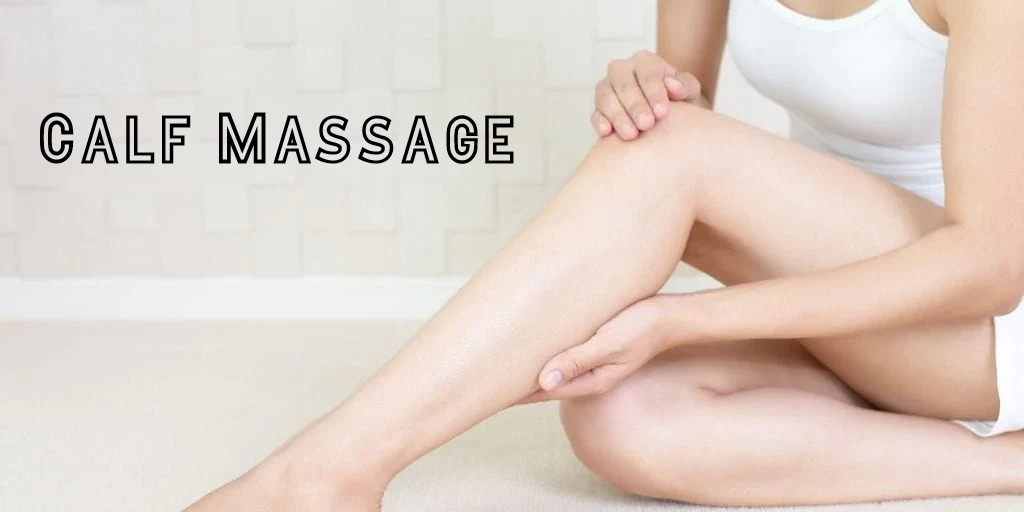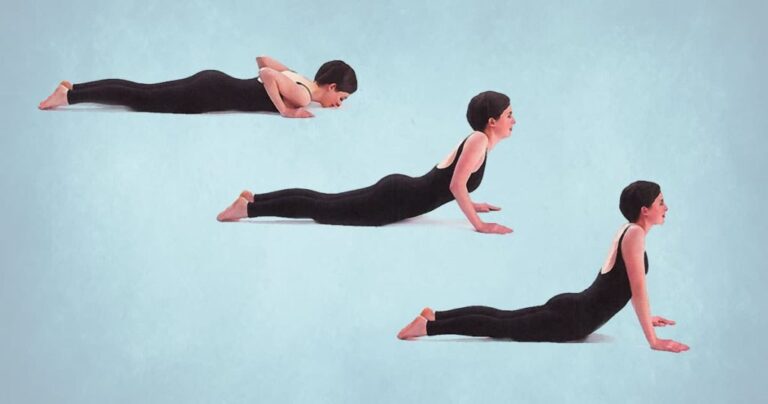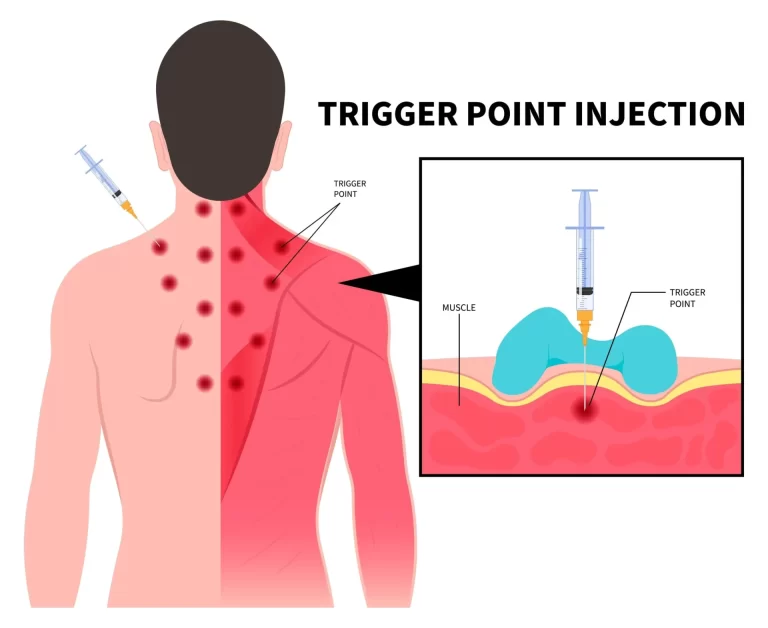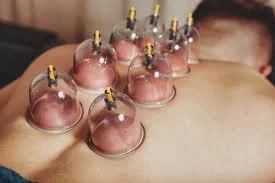Calf Massage
Table of Contents
What is a Calf Massage?
A calf massage is a therapeutic practice that involves manipulating the muscles in the calf region to enhance flexibility, reduce tension, and promote relaxation. This form of massage not only targets the calf muscles themselves but can also have positive effects on the entire lower extremity, improving circulation and relieving discomfort.
The calf muscles, located at the back of the lower leg, play a crucial role in supporting various daily activities and physical movements. Whether you’re an athlete, a fitness enthusiast, or someone who spends long hours on your feet, caring for your calf muscles is essential for overall well-being.
Relaxing massage therapy is one of the finest ways to loosen up tight calf muscles, even if rest and heat compressions can also be very helpful in the healing process.
Massage therapy is not only an excellent way to encourage relaxation and release tense muscles, but it also reduces muscle pain, improves blood flow, and works to eliminate any knots or inflammation that may be causing you challenges.
Why are our calves so important?
- One of the most underappreciated muscles in your leg is your calves.
- Mostly Greater emphasis appears to be placed on larger muscles like the hamstring and quadriceps.
- However, your calves are crucial to both the health of your legs and the avoidance of injuries!
- Every time you walk, your calves push you ahead, take on weight, and provide your body stability and posterity.
- problems like rips, strains, and ankle problems can also be caused by a powerful calf.
- It makes sense why it’s crucial to maintain their health.
What causes tight calf muscles?
- In general, any type of excessive activity, whether from regular exercise, continued walking, climbing, hiking, running, or jogging, tends to result in tight calf muscles.
- A back injury may even cause your calf muscles to become taut.
- This is because improper back alignment when walking and heavy lifting can impose additional tension on your lower body, including your calf muscles.
- The same is true for walking in uncomfortable shoes; your body will use your calf muscles more intensely if you wear heels or platform shoes that make it harder for your feet to maintain your weight.
- This may cause your muscles to ache and give you that achy feeling in your legs the morning after the gym.
Should I massage tight calf muscles?
One great method for easing pain and stress is to massage a tense calf muscle. Other benefits of massage therapy for tense muscles include the following:
Improved blood flow
When it comes to easing tight muscles, increased blood circulation should be your top focus. This is because increased blood flow instantly warms and loosens your muscles while also relieving pain.
Knots and inflammation
You might also be dealing with pain and muscle knots in the calf muscle if you’re feeling tightness and pain. By employing expert techniques to massage the problematic area, you may assist release these knots and reduce any inflammation, which will help your muscles relax and breathe easier.
Before massaging your calf muscles: considerations
Though there are a few things to consider before getting a calf muscle massage, it can be an excellent way to ease pain and tightness in the muscles. Observe the following:
- If you suspect a blood clot, never massage your calf.
- Get medical attention as quickly as possible.
- If your blood problems put you at high risk of bleeding, get in touch with a professional massage service like our Atlanta mobile massage.
- Should you experience painful varicose veins, stay away from massages.
- A massage is not advised if you have reduced sensation in your legs (such as from peripheral neuropathy).
- Massaging a freshly strained muscle is not advisable as this may lead to inflammation and impede your recovery.
- Before giving yourself a massage (or getting one from someone else), wait around 72 hours.
How to Massage a Tight Calf Muscle
So how can one safely and effectively massage tight calf muscles? This is what we advise doing:
Prepare the area
Make sure you have all the things you’ll need on hand before you begin, including a towel or blanket to cover yourself with and some massage oil or lotion. Wear loose clothes that give you access to your calf muscles, such as long or short trousers, depending on how comfortable it is for you to do so.
Start with slow, circling motions
Before tackling more intense exercises, start by circling your calf muscles from top to bottom. This will help loosen them up. Make sure that every circle is strong yet soft; try not to apply excessive pressure to any one spot to prevent exacerbating the pain or discomfort. If you want a more delicate massage, you can also use softer strokes.
Focus on any areas of tension
Now that the muscles in your calf are beginning to relax, focus on any lumps and knots you may have previously observed. Until the tension is released, apply firm pressure (but never too much!) and massage the affected area in circular motions with your thumbs.
Increase pressure as needed
Increase the pressure you’re applying if, after concentrating on one area, you’re still feeling pain or tightness—just never to the point where it hurts! Before stepping up the intensity even further, start out slowly and steadily to give yourself time to get used to the increased level of effort.
Finish up and relax
When you’ve worked out all the knots and lumps, it’s time to use softer strokes to close the massage. To further relax the muscle and relieve pain and discomfort, gently move your fingertips in circles, pushing and releasing as you go. Afterward, give your calf muscles some time to relax. As with any massage, remember to keep hydrated!
When to worry about calf pain?
- If you utilize the proper techniques and avoid applying too much pressure to the problematic area, massage treatment for calf pain should hasten your recovery and lessen your suffering.
- That being said if your symptoms haven’t gone away after three to five days, we advise seeing your doctor since prolonged calf discomfort may indicate a more serious problem.
- Rarely, calf pain may be linked to DVT (Deep Vein Thrombosis), a dangerous disorder in which blood clots form in the veins of your legs.
- Therefore, get medical attention right away if you notice any worrisome signs, such as swelling, warmth under your skin, or discoloration of your skin.
- As always, if done properly, massage treatment for calf pain can be helpful; nevertheless, if you’re unsure about your symptoms, it’s preferable to speak with a doctor or professional.
Why Do My Calves Feel Tight?
When you wake up with tense muscles in your calves, your first thought is often, “What happened?” The following everyday activity-related factors might lead to tight calf muscles:
Prolonged use of the muscle, e.g. a long hike
Sudden increase or start of intense use, e.g. new workout routine
Change in footwear type, e.g. heels or sandals
Muscle rips or atrophy would be a more significant, albeit less common, explanation. Should you believe that any of these could be the cause of your calf pain, please consult your doctor. Although any of the above exercises may strain your calf muscles, you shouldn’t be worried.
These are all frequently occurring events, especially when a pattern or way of life is altered. Soreness in the muscles may develop right after or after 12 hours, increasing 48 to 72 hours later.
Even though the duration of any kind of muscle soreness might range from one to several days, there are thankfully a number of techniques you can attempt to help reduce the discomfort.
Stretching
The recovery process can be accelerated by gently extending the injured muscles. This may produce a little pain, but if it hurts sharply, you should stop and consult a doctor.
Rest
If the situation may seem obvious, resting tired muscles is helpful. You can alleviate some of the tension that comes with resting with your legs straight by elevating your calves or supporting your knees.
Massage
Stiff muscles can be relieved by self-massaging, either with your hands or a massager. Remember to distinguish between pain and discomfort during stretching. One of the best things you can do for your stiff calves is to get a massage. Let’s explore further massage methods for tense calf muscles and demonstrate how to utilize a self-calf massager to ease discomfort. Our favorite shiatsu foot and leg massager machine is the one we use to relieve pain.
Ice or Heat for Tight Calf Muscles?
Using heat or ice to relieve tight calf muscles is another useful treatment option. Though for different reasons, both solutions relieve aches and strains in the muscles.
When treating tight calf muscles, apply heat or ice as needed:
Ice for Tight Calf Muscles
When ice is applied to a muscular strain, it reduces swelling and inflammation in the region that is affected. Use an ice pack, cold compress, or even a towel-wrapped bag of peas.
Heat for Tight Calf Muscles
Heat therapy helps release tense muscles in the calf by improving blood flow to that area. Your sore calves may feel better if you lie down with a heating pad or hot water bottle under your legs. In addition, taking a shower or warm bath can help release tension and improve sleep. Because your calves are not under as much direct pressure, the warm water may feel more comfortable than a heat pad.
To relax stiffness in the joints and improve blood flow to the calf muscles, it is advised to use a heated foot and calf massager. In addition, it is advised to apply heat or ice for 20 minutes, and then remove it for another 20 minutes. You can repeat as necessary, but extended exposure to extremely high or low temperatures might result in burns or excessive heat.
Can a Massage Loosen Tight Calf Muscles?
- In short, yes, a massage can help release tight muscles in the calf.
- The lengthy response entails going into further detail about the benefits of calf massage for tense muscles.
- First of all, we must keep in mind that the muscles of the gastrocnemius and soleus are the two primary muscles that comprise the calf.
- Addressing the trigger points in these muscles will result in the greatest decrease in tension when massaging stiff calves.
- A trigger point, sometimes called a knot, can be worked on until the entire muscle is softer and less tight.
- Getting expert help can be a smart idea if you are unsure of how to treat the specific soreness you have in your calves or if the muscle pain is particularly severe or reoccurring.
- You can find the relief you require by consulting a qualified specialist, such as a massage therapist or physiotherapist.
Causes for Sore and Tight Calves and Their Symptoms
There are numerous techniques to make your calf muscles tense. Running, jogging up stairs, or even lying in bed may cause them to cramp! In any case, having sore calves is an unpleasant and uncomfortable experience. In addition to discomfort, your calf muscles may also experience numbness, tingling, weakening, or a dull throbbing sensation.
So how may these and other aches be relieved by a decent calf muscle massage?
Benefit – How a Calf Massage Treats Soreness
- Delayed-onset muscle soreness, or DOMS, is the most common type of pain in your calves.
- This is especially true if you have discomfort after working out.
- Your calf’s muscular fibers are tearing, which is why it hurts.
- Because a leg massage increases the circulation of blood in the area, it can help lessen the pain associated with DOMS.
- This lowers inflammation and promotes healing by increasing the quantity of oxygen and nutrients that reach your muscles.
- Your lymphatic system will be stimulated by a massage of your calves.
- Lactic acid and other waste products and poisons are removed from our muscles by the applied pressure and movement of a massage.
- This helps relieve a tense calf muscle and lessens muscle fatigue.
Benefit – How a Calf Massage Enhances Leg Performance
- Maybe there isn’t any severe discomfort or tightness in your calves.
- You can still benefit from a massage of your calf muscles!
- Try giving your calves a regular massage if you want to improve the performance and function of your legs.
- How does it accomplish this? A massage not only improves blood circulation to relieve pain, but it also reduces muscular fatigue and boosts muscle compliance.
- While reducing muscle stiffness, muscle compliance aids in extending the range of motion.
- Another excellent method to warm up before exercising is with a calf massage.
- The act of manipulating muscles results in their elasticity and an increase in their warmth.
- Your calves will be more flexible and elastic as a result of an increase in muscle temperature, which will improve your performance during activities.
Benefit – How a Calf Massage Reduces Stress
- It has been shown that massage therapy can lower tension and anxiety levels.
- Many people find that massages are calming and conducive to relaxation.
- For this reason, calf massages are beneficial in reducing stress.
- Have you had a hard workday? Alternatively, perhaps you spent the whole way home on your commute standing.
- Both the ache and the nervousness can disappear with a good calf massage.
- It could be challenging to arrange for a massage therapist on short notice, so you have the option to utilize a leg massager or self-massage.
How to Massage Tight Calf Muscles
Thankfully calves are a fairly simple body part to reach, using your hands or a massage tool. These days, a wide range of massage tools make it simple to receive a deep tissue calf massage:
Shiatsu massagers
Massage guns
Foam rollers
Trigger point balls
In addition to your calves, we have a variety of body massagers in our collection that are beneficial for other parts of your body. Even with all the above gadgets’ usefulness and ease of use, you will still need to know how to target the proper locations if you want the maximum amount of comfort.
Calf Trigger Points & Techniques
Since all of the calf trigger points are found towards the top of the calf muscle, concentrating a massage on this region will yield the greatest results. To warm up the muscle, apply a little pressure while stroking the leg from top to bottom.
Next, knead the region that is affected. Consistently kneading for many minutes should cause the knots and tightness to gradually disappear. Give deep, continuous pressure along the muscle’s length if it’s still sore to release any remaining tension. These massage techniques can be used on yourself or with a massager.
Shiatsu Foot & Leg Massager
A shiatsu massage is a kind of massage that relieves tension by focusing on pressure points. Our incredibly adaptable model is prepared to give your feet or lower legs a massage. The shiatsu massager can more readily and effectively reach the trigger points in the calf by positioning it slightly below the knee.
There are five different massage settings available for the shiatsu massager. To get the best relief, select from rolling, swaying, or compression. For additional blood flow, you can add vibration and mild heating to your foot and calf massage. Please see the quick start guide for further details and a video that demonstrates how to use it.
Premium Percussion Massage Gun
There may be a bit of trial and error needed when using a massage gun on your own calves. Finding the trigger sites in the calf muscle presents the biggest difficulty. A more effective massage will result from placing your feet together in front of you, which will provide you enough space to work the entire calf muscle.
Compared to a shiatsu massager, our high-quality percussive massage cannon is more portable and provides a deeper, more concentrated massage. It is also excellent for the entire body, but it does not give as much variety in massage options as a shiatsu massager, which comes with four different massage gun attachments to customize the pressure and intensity of your massage. We provide a Maximum Recovery Bundle that comes with both the massage gun and the shiatsu massager so you may have the best of both worlds.
Foam Rollers
Compared to modern technology, foam rollers take more practice. Training or instructional films could help you understand how to achieve the best outcomes. That doesn’t mean, though, that you can’t use it simply to receive some relief. With your weight supported by your arms, place the foam roller beneath your legs and roll your calves back and forth over it. Although the relief isn’t as focused as it would be with a handheld tool, a roller’s deep, continuous pressure can aid in releasing tension all around.
Trigger Point Balls
Trigger point balls require a lot of practice to achieve satisfactory outcomes, much like foam rollers. Depending on the muscles in need of relief, they come in a range of sizes, textures, and densities. Most of the time, you can get some relief by massaging the trigger points in your calves in a circular motion with a smooth ball.
Compared to a foam roller, it is more focused, although occasionally it is too strong. Before relying solely on trigger point balls to relieve your muscle pain, we advise consulting a physiotherapist or other medical expert.
Conclusion
We’ve covered several techniques for massaging tense calf muscles, so the next time it occurs, you should be ready. There are a few strategies to lessen the likelihood of tense and strained muscles in advance. You can wake up feeling energized and ready to jump out of bed by warming up before exercise, cooling down after, and drinking lots of water.
FAQ
A therapeutic intervention that increases circulation and reduces pain and tension is calf massage. The calf massage also enhances autonomic function by influencing the cardiovascular system’s vagal tone.
Holding onto a chair, extend one leg back, keeping your heel flat on the ground and your knee straight. Gently bend your front knee, elbows, and hips forward until your calf begins to stretch. Delay moving for a duration of 30 to 60 seconds. After changing your leg positions, repeat with the opposite leg.
Any muscle injury benefits from massage, but calf muscles are especially so. Massage can aid in promoting blood flow, releasing spasms in specific muscular locations, and mobilizing muscle fibers once the acute period of recovery has ended.
Every day, giving yourself a short, moderate massage can help ease leg tightness, increase blood circulation, and lessen muscle strain.
Some people use massaging their calves as a method to assist them get smaller calves. It entails immersing the legs in warm water for ten to fifteen minutes, after which a skilled professional will vigorously massage the affected area. This service is provided by several gyms, with the promise of smaller calves in roughly ten sessions.
References
- Au, O. (2022, March 30). 3 Ways a Calf Muscle Massage Can Benefit You Today. OSIM Australia. https://osim.com.au/blogs/wellness-hub/calf-muscle-massage
- Seo, D. (2022, March 23). How to Massage Tight Calf Muscles. Cloud Massage. https://cloudmassage.com/blogs/news/how-to-massage-tight-calf-muscles
- Vishram, A. (2023, August 24). How to Massage a Tight Calf Muscle — Spa Theory. Spa Theory. https://www.spatheory.com/spa-theory-wellness-beauty-blog/how-to-massage-tight-calf-muscle




